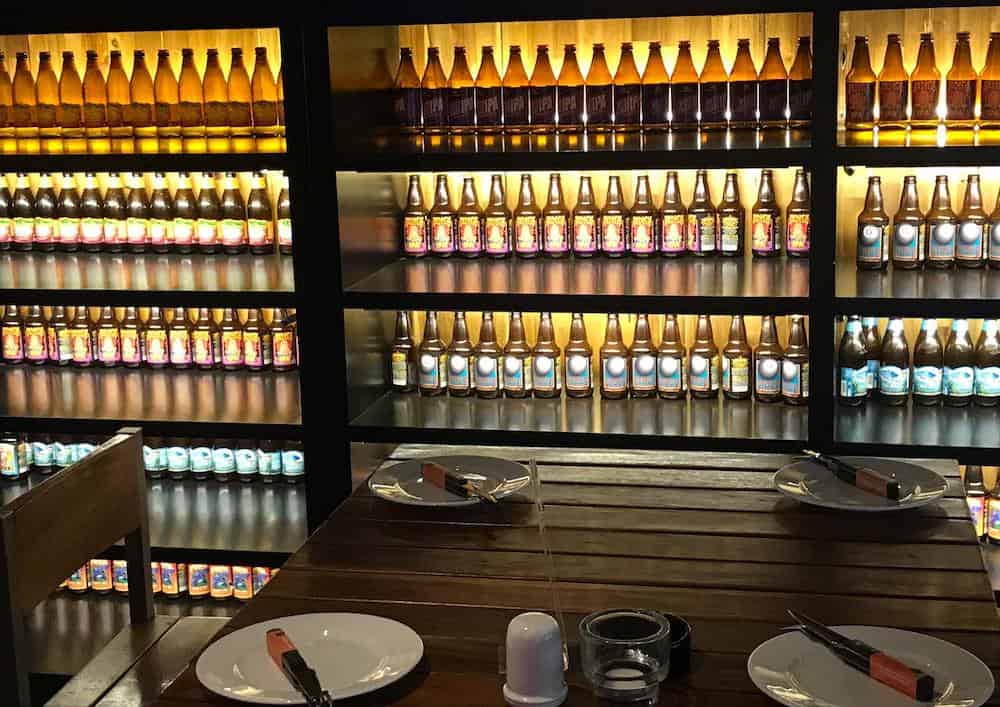Unlike most Asian countries, Vietnam has a long tradition of brewing beer and boasts the third highest beer consumption in Asia after China and Japan. Thanks to its economy that has grown steadily over the past years, it is also a growth market for foreign beer producers. However, high import tariffs prevent foreign beers from gaining a foothold in the market. This is one reason why the Vietnamese as well as tourists from all over the world have developed a taste for local beer and, in recent years, also for craft beer.
A long brewing tradition
French colonialists introduced the art of brewing to Vietnam in the late 19th century, with brewers from the Czech Republic gaining influence later on. Today, the Vietnamese beer market is dominated by three major players. One is Hanoi Beer Alcohol and Beverage Joint Stock Corp (Habeco), which is now owned by the Vietnamese state and Carlsberg brewery. The others are Sabeco, a privately-owned company, and the Dutch Heineken Group. However, the craft beer scene is also flourishing, and micro-breweries are multiplying, especially in major cities like Hanoi and Ho Chi Minh City (formerly Saigon). Restaurant chains with a focus on beer, such as those run by the Vietnamese Golden Gate Group, organize drinking sessions in brewery pubs that have an Oktoberfest atmosphere – but take place every day and more or less around the clock.
Changing drinking habits
One interesting aspect is how drinking habits have changed: Vietnam is known for its sidewalk bars called “bia hoi”, where beer of the same name (meaning “fresh beer”) that is brewed fresh every day is drunk sitting on low stools and has long been popular among both locals and tourists. “Bia hoi” has given rise to a preference for lighter beer. Brewed locally, it is inexpensive and therefore consumed in large amounts.
The budding economy combined with the enthusiasm of the Vietnamese people for all things international has boosted the popularity of craft beer. As this handcrafted beer is consumed more consciously, it is often stronger. IPAs are a huge success, for example, as is German-style “gose” beer. Despite the subtropical climate with temperatures of up to 40 degrees, darker beers such as porter or black beer are also common. But the Vietnamese craft beer market is dominated above all by pale ales that are more drinkable. Wheat beer is also popular, often enhanced with local fruits that provide an interesting flavor. C-Brewmaster, a craft beer brewery from Hanoi that is fully equipped with German brewing technology, makes a honey beer that is appreciated by locals and tourists alike.
Frequently, the mash tuns are operated by highly experienced master brewers from the USA, or Asians who have trained in Germany. Breweries like 7-Bridges (Danang), East-West (Saigon), Turtle Lake (Hanoi) and Rooster (Saigon) employ American brewers. Nevertheless, some of the most successful beer styles are those with a distinctly Vietnamese touch. Free from legal constrictions like the German Purity Law, local ingredients such as cocoa, jasmine, ginger, lemongrass or passionfruit are often added that give the beer a fascinating flavor.
When it comes to other ingredients, however, craft beer brewers in Vietnam frequently rely on imported goods: Hops are sourced from the Yakima Valley in America or the Hallertau region of Bavaria. Germany is also the partner of choice for malt. Palatia Malz is represented in the market through its partners Beerplaza and Artimalt. The most popular malts are pale ale, pilsner malt, wheat malt and the classic craft beer malt Red X. “Unlike many other young craft beer markets, Vietnamese craft beer is extremely drinkable with fine nuances. Local brewers tend to avoid overdoing the IPA, as experienced brewers have found a happy medium between local tastes and the infinite range of possibilities associated with craft beer”, said BESTMALZ managing director Axel Göhler after his return from visiting local breweries in Vietnam.


